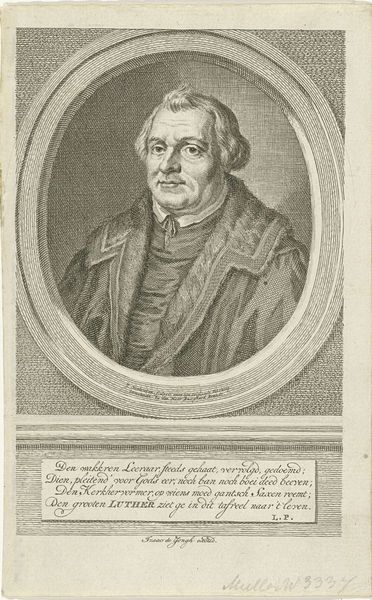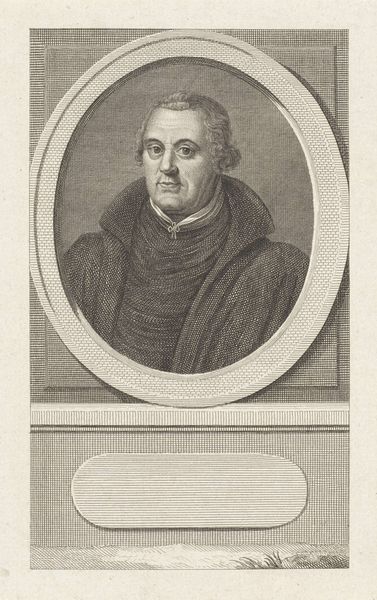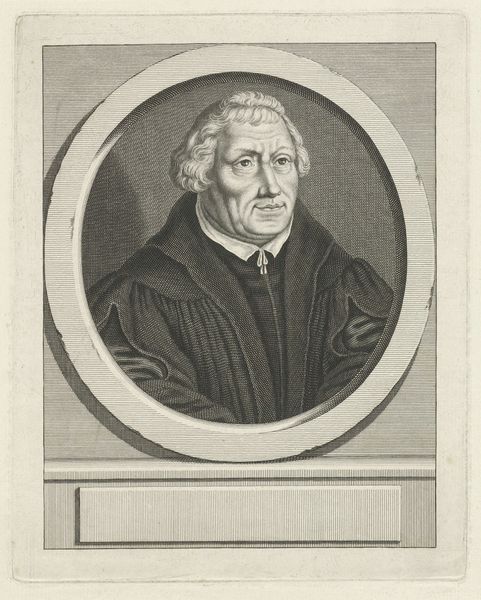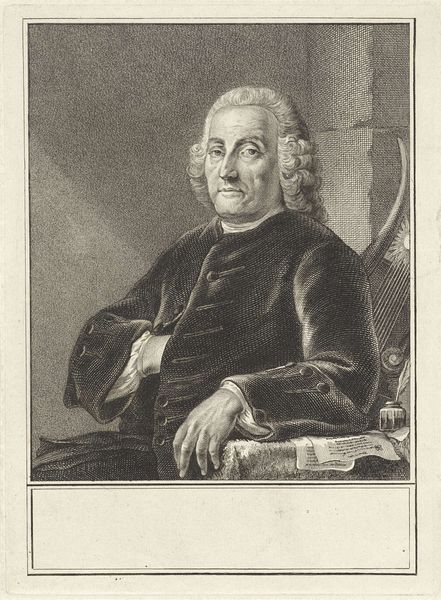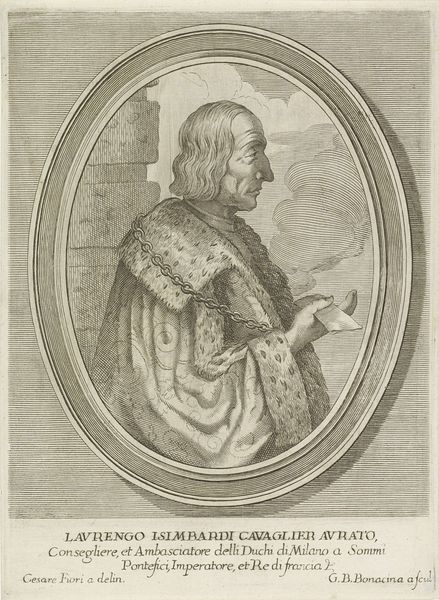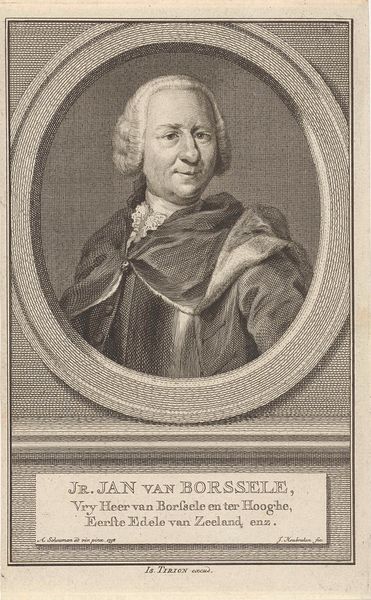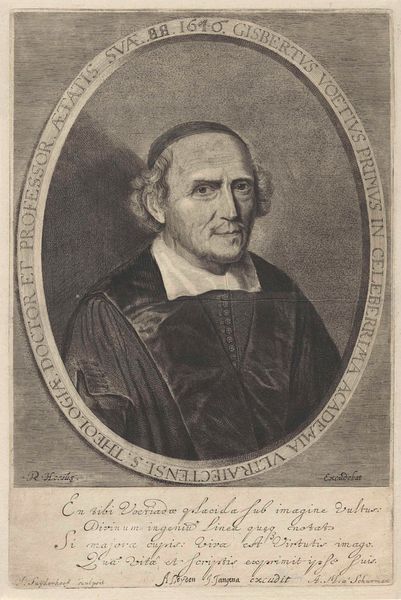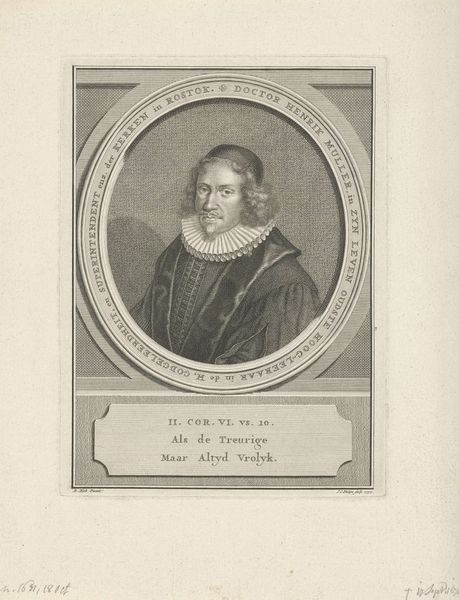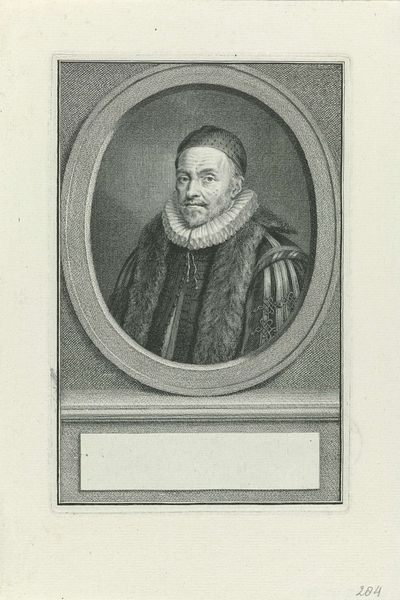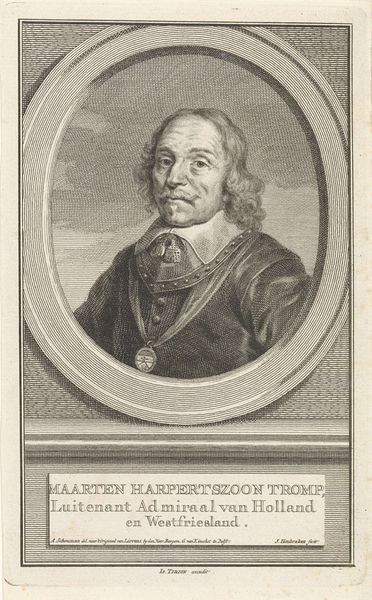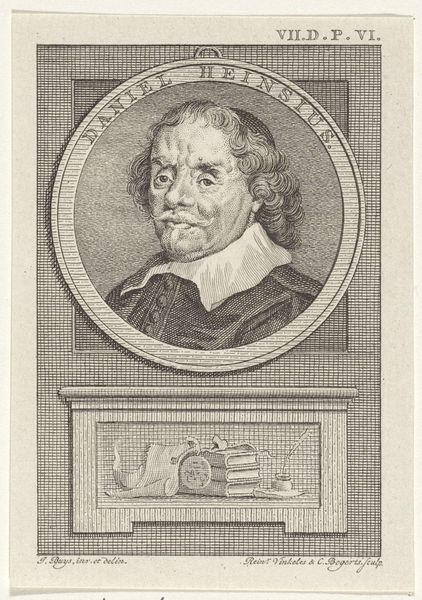
Dimensions: height 221 mm, width 165 mm
Copyright: Rijks Museum: Open Domain
Curator: Ah, there he is. A powerful depiction of Martin Luther, made between 1777 and 1780 by Jacob Houbraken. It’s an engraving, so a print, which allowed for wide dissemination of his image, even centuries after his death. Editor: Stark! The intense gaze gets you immediately. It's a portrait in monochrome, yet there’s an undeniable depth, and… well, a slightly unsettling aura. I suppose revolution often carries a touch of the unsettling. Curator: Indeed. It captures a critical moment, or rather, memorializes a pivotal figure of religious reform. Think about it: this image circulates in a time of revolutions, and the engraving itself speaks to democratization of knowledge. How do you think this specific portrait of Luther, as opposed to any other, served its cultural moment? Editor: I think it's in the framing—literally. He's placed in this rather austere oval, set against a simple, even drab background. It lends him an air of accessibility, but also reinforces this idea of Luther as an almost mythic, self-contained entity. There’s also the choice of depicting him in what looks like scholarly robes, suggesting his intellectual authority. What strikes me is the lack of… flourish. He looks very *real*, don’t you think? Curator: He does, and the “realness,” as you say, would have been vital. By the late 1700s, the memory of the Reformation had become potent with varied political implications. Consider the Enlightenment fascination with figures of history, coupled with the burgeoning print culture that democratized access to such images. Editor: Absolutely. It's also compelling to think about the subtle power of prints like this. In an era before photography, these engravings become definitive. How many people actually *saw* Luther? For generations, *this* image shaped their perception of the man, influencing views on religion, authority, even rebellion. And how powerful, still! What do you take away, overall, from the experience of engaging with this portrait? Curator: It’s a potent reminder of how visual culture shapes and solidifies historical narratives. The Houbraken portrait demonstrates art’s inherent capacity to participate in, or perhaps even instigate, ideological movements across generations. The man may have died, but the image lives on with a pulse. Editor: For me, it’s this eerie echo across the ages, the ghostly hand of a long-dead revolutionary still shaping our thoughts. Pretty impressive for a simple engraving, isn't it?
Comments
No comments
Be the first to comment and join the conversation on the ultimate creative platform.
